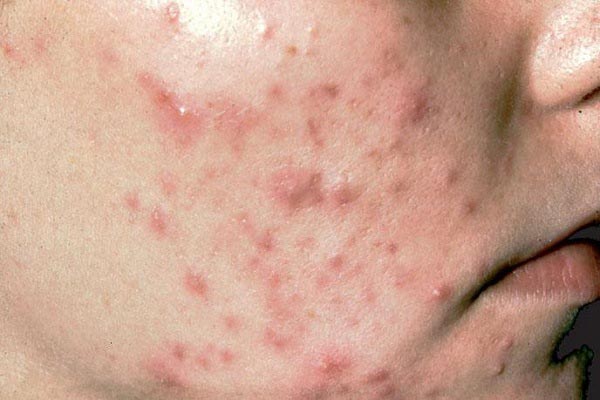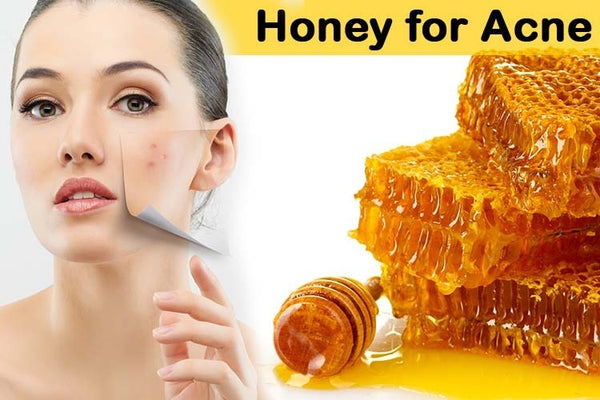Natural ways to get rid of acne scar treatment
Acne is a common problem seen in teenagers and adults. It is caused by hormonal changes, stress, menstruation, oil-based cosmetics or birth control pills, etc. When acne clears, the skin will recover by producing collagen to heal the skin, however, the process This can leave a keloid or a concave scar.
There is no way to make the scars go away completely, but many scars will fade on their own over time. In fact, some natural acne scar treatment can speed up skin lightening and fade scarring.
Specifically:
content
- What is the cause of post-acne scarring?
- Types of acne scars
- What cosmetic methods to treat acne scars?
- How to treat acne scars at home?
- How to prevent acne scars?
- Conclusion
1. What causes acne scars?
Usually acne scars are the result of inflammatory lesions such as pustules, cysts or cysts. Inflammatory acne occurs when a hair follicle becomes clogged with dead cells, sebum, and bacteria. When the blockage becomes too much, these inflamed hair follicles swell and burst. If the inflamed hair follicle ruptures near the surface of the skin, the inflammatory lesion heals quickly without scarring. In more severe cases, the inflamed hair follicles rupture deep beneath the skin, forming a scar.Inflammatory acne that breaks deep under the skin will form a scar because it is related to collagen fibers. Underneath the skin is a layer called the dermis, which contains a lot of collagen and elastin fibers. These elastic fibers will help the skin become firm, not flabby. When inflammatory fluids from the hair follicles spread to the dermis, they destroy collagen fibers. Our skin will then begin to synthesize other collagen fibers instead. In case the synthesis of new fibers is not perfect, acne scar treatment will form.
The more inflammatory the lesion, the deeper under the skin, the higher the likelihood of scarring. For example, large cystic acne will leave more scars than small pustules.

2. Types of acne scar
After acne, especially inflammatory acne, we can have the following two types of scars:Keloids. If healing to repair inflammatory lesions beneath the skin becomes excessive. When the body regulates the production of too much collagen and fibrous fibers in the inflammatory lesion, the result will be a keloid scar. This type of scar is raised on the surface of the skin with signs of hardening, redness or itching.
Concave scars (pitted scars). This is more common than keloids. Indented scars are the result of the body not producing enough collagen fibers to replace it. At the same time, the fibrous fibers pull the surface of the skin downward, creating indentations. Concave scars are further divided into 3 types of scars: square bottom scars (boxcar), sharp bottom scars (icepick) and wavy scars (rolling). Depending on the type of concave scar, there will be different treatment methods.
3. What cosmetic methods acne scar treatment ?
Currently, there are many cosmetic technologies to help acne scar treatment . Which method to choose depends on the doctor's assessment of each client's skin type.Needle roller acne scar treatment: Use rollers containing many small needles to roll over the sticky skin. This first turnover will cut fiber yarn, create marks. From there, the activated base can produce new collagen to replace the old fibrous fibers and help fill the wall grooves.
Acne Scar treatment Light emitted from a high-energy laser machine creates lesions on the surface of the scar. From there, the body will produce replacement collagen in these damaged areas. As a result, new collagen fibers are created by the body that will help fill in the indented scar.
Acne scar treatment Chemical peel: This is a biological peeling method that helps to resurface the skin, replacing old skin cells with new skin cells. In the case of light or shallow scars, chemical peels will help regenerate and fill in concave scars.
Cut the bottom: This method uses a needle to cut the cable below the bottom of the net. Then, the base will synthesize the replacement collagen fibers and fill the vessels up.
Scar injection: In case of keloid scars after acne. Active ingredients injected into the scar will make the scar atrophy, not protruding on the surface of the skin.
Scar medicine: Topical cream is used to heal wounds, prevent scar formation or fade scars.
Acne Scar Treatment: Niacid
Treatment Niacid the universal complexion distillate.- Acne Scar Treatment Niacid The product specializes in regenerating & restoring the protective layers of the skin after acne (membrane - darkening - pores)
- Acne Scar Treatment Niacid is a concentrated solution of isolated molecules focused on raising indentations and clearing persistent blemishes (erythema, hyper-pigmentation etc) left on skin surface by inflammatory traumas like acne or other atopic disorders.
- Acne Scar Treatment Niacid the main ingredients of Niacid include Snail Essence, 3% Tranexamic Acid and 4% Niacinamide Acid (both are the leading skin care gold ingredients today).
![]()
4. How to acne scar treament at home?
In addition to cosmetic methods, there are methods to help acne scar treatment from natural products. We can easily find them in our house, that is:Acne scar treatment with Honey: Has antibacterial, moisturizing and wound healing properties. Applying honey to newly formed scars can help heal scars.
Acne scar treatment Aloe vera: Like honey, aloe vera is also used to help moisturize and heal wounds. Applying aloe vera on a new scar will help soften and fill the scar.
Acne scar Treatment with Turmeric: Turmeric contains curcumin, vitamins E, D... which are good for wounds. For acne scars, curcumin has anti-inflammatory effects, skin regeneration is scar healing.
Acne scar treatment with Lemon juice: Lemon juice has natural citric acid content. This acid will help regenerate new skin to replace old skin thereby helping to fill in shallow scars.

5. How to prevent acne scars?
It is absolutely not possible to prevent scarring after acne 100%. However, the following measures will help you minimize the possibility of acne scars to the lowest level.- Treat acne early: The best way to prevent acne scars is to treat acne. Early treatment of acne will limit large and deep inflammatory acne. As a result, the skin is not damaged much leading to the formation of scars. It should be noted that we should follow the instructions and instructions of the doctor when treating acne. Do not arbitrarily stop the drug or change the drug, causing the effect not to be as expected.
- Do not squeeze acne yourself: Using bare hands to squeeze acne is not as clean as we think. Bacteria on hands can make inflammatory acne worse. In addition, not removing all the acne underneath will cause acne to continue to swell and become inflamed.
- Reduce inflammation: The more inflammatory lesions, the deeper under the skin, the higher the likelihood of scarring. For example, large cystic acne will leave more scars than small pustules. Therefore, it is necessary to reduce inflammation with topical or oral medications so that the inflammation spreads deep under the skin.
- Do not pry the scales: When you have inflammatory acne, you will see a grinding or black scab on the surface of the skin. This abrasive or scab will help the skin heal and help it heal. Peeling off this abrasive will make the healing process uncertain and prone to scarring.
6. Conclusion
Acne scarring is a condition that can cause a lot of discomfort due to cosmetic effects. In addition to scarring, some daily habits are also easy to cause us to get acne scars. Therefore, when you have acne, especially inflammatory acne, you should pay attention to early treatment. At the same time, pay attention in skin care, absolutely do not squeeze or pick acne with your hands. These bad habits will make the skin damaged and more prone to scarring.




